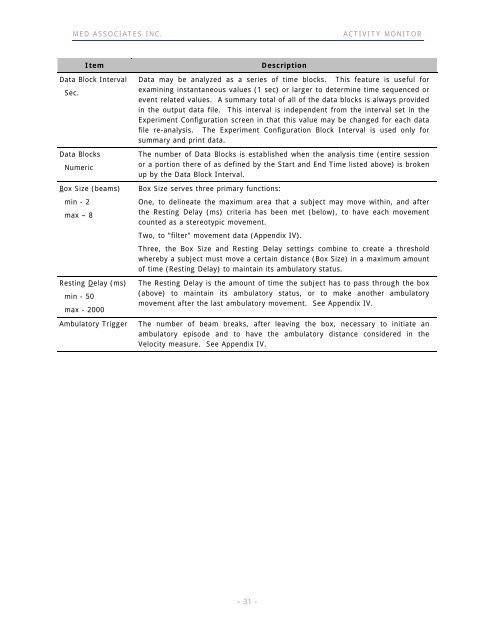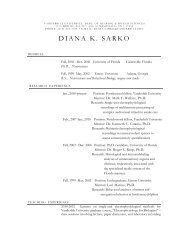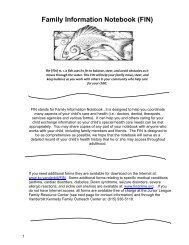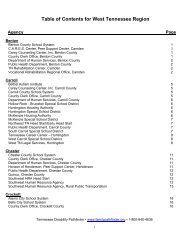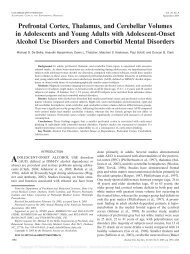ACTIVITY MONITOR - Vanderbilt Kennedy Center
ACTIVITY MONITOR - Vanderbilt Kennedy Center
ACTIVITY MONITOR - Vanderbilt Kennedy Center
Create successful ePaper yourself
Turn your PDF publications into a flip-book with our unique Google optimized e-Paper software.
MED ASSOCIATES INC. <strong>ACTIVITY</strong> <strong>MONITOR</strong><br />
Item Description<br />
Data Block Interval<br />
Sec.<br />
Data Blocks<br />
Numeric<br />
Box Size (beams)<br />
min - 2<br />
max – 8<br />
Resting Delay (ms)<br />
min - 50<br />
max - 2000<br />
Data may be analyzed as a series of time blocks. This feature is useful for<br />
examining instantaneous values (1 sec) or larger to determine time sequenced or<br />
event related values. A summary total of all of the data blocks is always provided<br />
in the output data file. This interval is independent from the interval set in the<br />
Experiment Configuration screen in that this value may be changed for each data<br />
file re-analysis. The Experiment Configuration Block Interval is used only for<br />
summary and print data.<br />
The number of Data Blocks is established when the analysis time (entire session<br />
or a portion there of as defined by the Start and End Time listed above) is broken<br />
up by the Data Block Interval.<br />
Box Size serves three primary functions:<br />
One, to delineate the maximum area that a subject may move within, and after<br />
the Resting Delay (ms) criteria has been met (below), to have each movement<br />
counted as a stereotypic movement.<br />
Two, to "filter" movement data (Appendix IV).<br />
Three, the Box Size and Resting Delay settings combine to create a threshold<br />
whereby a subject must move a certain distance (Box Size) in a maximum amount<br />
of time (Resting Delay) to maintain its ambulatory status.<br />
The Resting Delay is the amount of time the subject has to pass through the box<br />
(above) to maintain its ambulatory status, or to make another ambulatory<br />
movement after the last ambulatory movement. See Appendix IV.<br />
Ambulatory Trigger The number of beam breaks, after leaving the box, necessary to initiate an<br />
ambulatory episode and to have the ambulatory distance considered in the<br />
Velocity measure. See Appendix IV.<br />
- 31 -


